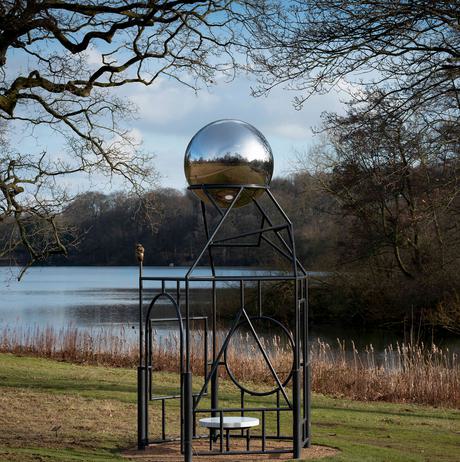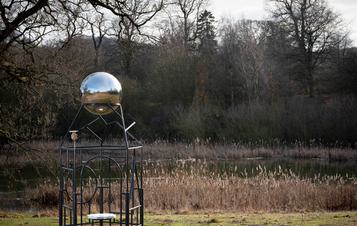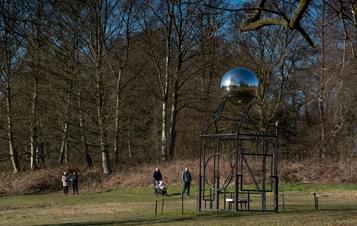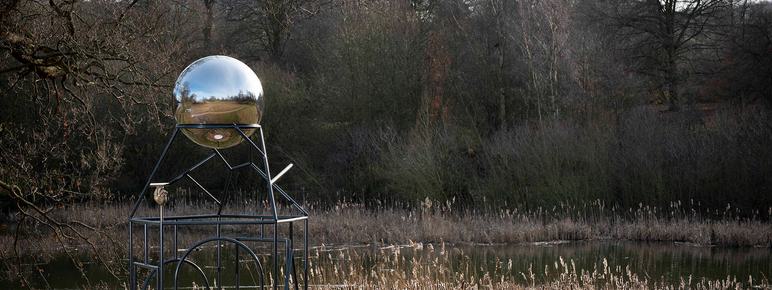
Lucy + Jorge Orta: Gazing Ball 2018
Art Outdoors /Lucy + Jorge Orta: Gazing Ball 2018
Gazing Ball was originally commissioned for The National Trust’s Folly! programme, in which artists create responses to re-imagine lost follies at Fountains Abbey and Studley Royal Water Garden, North Yorkshire.
Particularly fashionable in eighteenth-century estates, follies were decorative talking points along walks, acting as a place for people to pause, take in views or to sit and converse. Gazing Ball now sits within the Bretton Estate, another landscape designed in the eighteenth century and which has a number of existing follies, and also some that have been lost over time.
Framing the views beyond, Gazing Ball has differently shaped geometric windows within its open structure that offer varied outlooks onto the landscape, observed from a central seat, and relates to the historic trend for emphasising special or far-reaching vistas. Cradled at the top, and providing another way of seeing, is a large mirrored sphere that reflects and distorts the lake and surroundings.
You might also like
- Art Outdoors
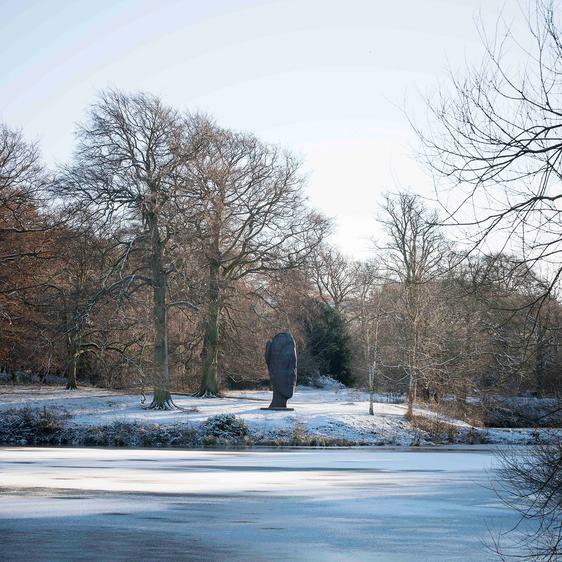
Jaume Plensa: Wilsis
Wilsis appears to be deep in thought or dreaming. Her eyes are closed and she is inward-looking and self-contained, remote from the present moment and the beauty of the surrounding scenery. Although monumental in size at over 7 metres high, this sculpture depicts a normal girl, rather than immortalising a traditionally extraordinary or powerful person. - Art Outdoors
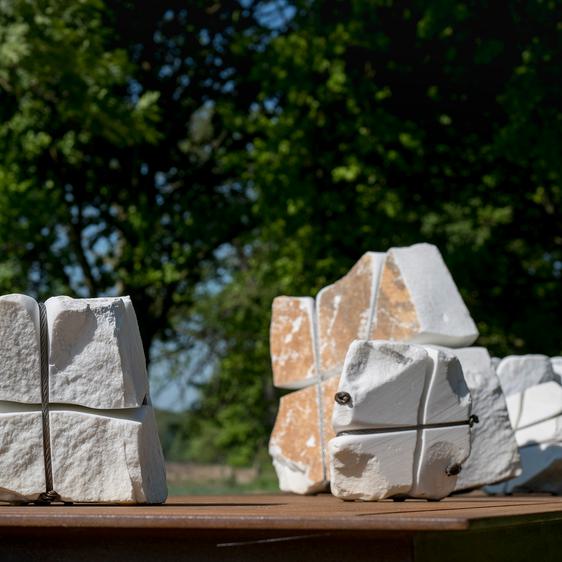
Mikayel Ohanjanyan: Diario
Diario is a physical expression of the many connections that humans make with one another over the course of a lifetime, whether fleeting associations or enduring and intimate bonds. Ohanjanyan draws on a deep interest in our individuality and what we share of ourselves through our relationships with others, inspired by how the journey of our lives is shaped from beginning to end. - Art Outdoors

JocJonJosch: Eddy
Eddy continues JocJonJosch’s investigations into collaboration. The round boat with three oars is symbolic of the collective’s dynamic, in which Joc, Jonathan and Joschi wrestle towards a destination. There is a sense that each time one would attempt to move forward, his movement would be countered by the action of the other two, leaving them literally turning in circles. - Art Outdoors

Lucy + Jorge Orta: Diana
Woodland Spirit – Diana, formerly known as Ulbelka (a water goddess and the ancient name of the Huveaune, also a word meaning ‘destroyer’, referencing the river’s tempestuous character), was renamed by the artists in 2014 to reflect its current location at YSP.
